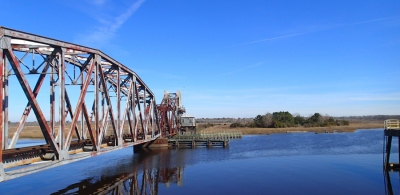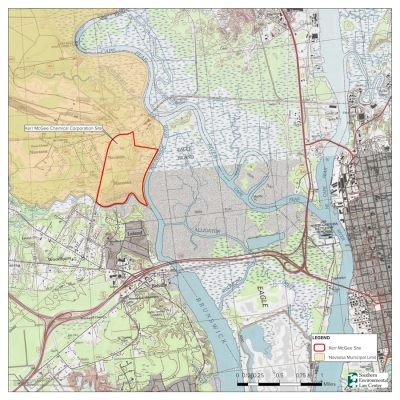Ensuring neighbors are included as North Carolina Superfund cleanup proceeds
Just across the Cape Fear and Brunswick Rivers from Wilmington, North Carolina, sits Navassa, a rural, predominantly African-American town working to overcome the legacy of pollution left by the chemical giant Kerr-McGee. For more than four decades, the company operated a 300-acre wood treatment facility in the town of Navassa and dried creosote-soaked poles and lumber on the bare earth. Although the operation closed in 1980, high levels of creosote remain in much of the soil and groundwater.
The levels and extent of creosote pollution were so great that the Environmental Protection Agency declared the area a Superfund site in 2010. Seven years later, conversation is ongoing about how best to address the site. This weekend, invested parties, including SELC, will be in Navassa for a multi-day visioning workshop focused on that question.
“SELC is attending this workshop to amplify local voices and to provide input to regulators on their obligations to fully and appropriately respond to the vision of the citizens for a healthier environment in Navassa,” said Senior Attorney Chandra Taylor.

Brunswick River
The Superfund site in Navassa includes a long stretch of undeveloped riverfront along the Brunswick River.
At the workshop, participants are digging in to fleshing out the best future use of the contaminated site, which EPA allocated $93 million to cleanup. The large site offers opportunities for redevelopment and green space as its positioned near an interchange for Interstate 40 and includes a large section of waterfront along the Brunswick River. Local citizens will also continue the conversation about what can be done with an additional $23 million available through the Navassa Trustee Council, set up to oversee natural resources restoration projects.
“I hope that when you look across the river, we are a better Wilmington,” said Letanya Beatty-Nixon, whose father lives across the street from the Kerr-McGee site. “I hope the final plan makes a better tomorrow for Navassa, something really unique that can sustain us for many years.”
Before SELC stepped in, the trustee council was considering proposed restoration projects that were many miles downstream from where the pollution occurred and involved virtually no participation by the people of Navassa, or concern for their needs.
As this process unfolds, local residents have turned to SELC to ensure their voices are heard and these dollars are invested in ways that advance the recovery of natural resources in Navassa itself, where the damage occurred.
Navassa Mayor Eulis Willis remembers first hearing about the cleanup.

Kerr-McGee site
This map shows the area under consideration for the Superfund cleanup, as well as Navassa’s proximity to Wilmington, N.C., about 5 miles to the east.
“We had to decipher all the jargon first, Superfund and brownfield and all that. It’s a whole different language,” Willis said. “Then, when SELC started getting involved we started getting some feet on the ground and learning and understanding what kind of impact all this is going to have on us.”
Taylor is leading SELC efforts to help the community evaluate proposed cleanup and restoration plans and to make certain they result in genuine remediation of soil and groundwater while providing meaningful economic, recreational, and environmental health benefits to those most affected by Kerr-McGee’s pollution.
Working with local churches, town officials, and concerned neighbors, SELC is improving public participation from both sides, helping ensure that processes like the visioning workshop are conducted in a way that is most likely to result in meaningful public input and partnering with members of the public as they work to better understand the many factors at play and share their feedback.
One promising idea on the table is the town’s proposal to convert a portion of the Kerr-McGee footprint that was not contaminated into a heritage center and nature park. The site would encompass an outdoor learning site, walking trails through areas restored to their natural range of species, and a new pier that provides access to the Brunswick River. Local citizens have also expressed the importance of allocating resources to environmental education, Gullah Geechee cultural preservation, local foods cultivation, and eco-tourism. Water quality monitoring, stormwater management, and addressing other environmental health issues are also on the table.
“We live in this bucolic, rural setting and we want to make life good for everyone in Navassa,” said Willis.
